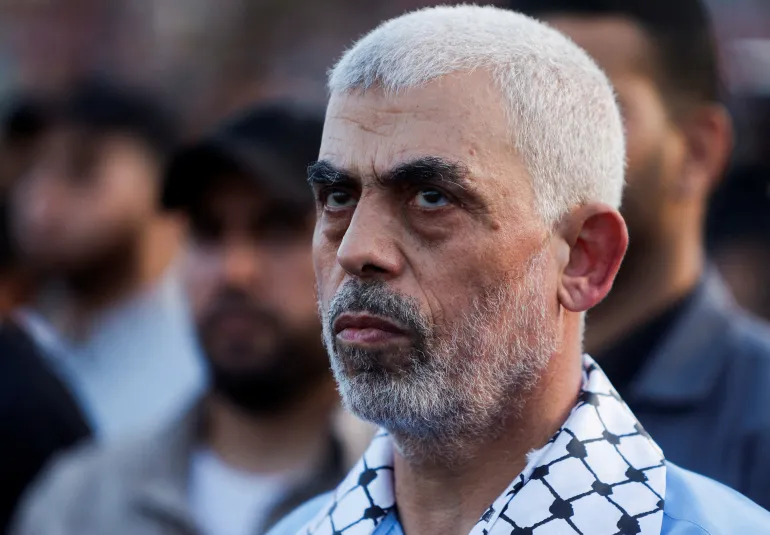Yahya Sinwar, a key figure behind the tragic events of October 7, was killed recently after a lengthy pursuit by Israeli intelligence and defense forces.
His demise came about in a manner that seemed almost coincidental, as the soldiers involved were unaware of his identity when they engaged him.
This 61-year-old man, often referred to as the Butcher of Khan Younis, had been hiding in a network of underground tunnels before his final encounter with Israeli forces.
The Encounter
On a Wednesday morning, a unit from the IDF’s 828th Bislamach Brigade was conducting patrols in Tal al-Sultan, a neighborhood in Rafah.
During their patrol, they came across three Hamas fighters.
In the ensuing firefight, Sinwar found himself separated from the others and ran into a nearby building.
The IDF troops, recognizing the threat, fired tank shells in his direction.
In the midst of the chaos, two grenades were thrown at them—one exploded, while the other failed to detonate, prompting the soldiers to pull back and deploy a drone to track Sinwar’s movements.
The Fatal Strike
Dramatic footage captured by the drone revealed Sinwar, his face partially concealed by a scarf, desperately throwing a stick in a last-ditch effort to fend off the incoming drone.
However, it was too late; two 120mm tank shells and a Matador missile struck the building, causing catastrophic damage and leading to his death.
Initially unaware that they had eliminated such a high-value target, the soldiers returned to the site the following morning, only to realize one of the deceased resembled the notorious Hamas leader.
Identification and Confirmation
Images emerged showing Sinwar’s lifeless body among the debris, with visible wounds that underscored the ferocity of the encounter.
Reports indicated that he had been found with a weapon, a flak jacket, and a substantial amount of cash.
Israeli officials noted that Sinwar appeared to have been prepared to flee, as he possessed several fake passports.
The remains were examined extensively, with dental records and fingerprints ultimately confirming his identity.
Reactions and Implications
Hamas has yet to release an official statement regarding Sinwar’s death, although sources within the organization have indicated that they believe he was indeed killed.
The Israeli military noted that Sinwar had been a prime target since the October 7 attacks, but prior to his death, they hesitated to take action due to concerns about hostages and explosives he might have had with him.
Israeli police confirmed the identification of Sinwar’s body through genetic records, as he had been imprisoned in Israel for two decades.
The Bigger Picture
Israeli officials have expressed that Sinwar’s elimination is a significant achievement, framing it as a response to the atrocities committed during the October 7 attacks, which left many Israelis dead and numerous others taken hostage.
His death may lead to potential changes in Gaza’s political landscape, with calls for the release of hostages still held captive.
The Future of Hamas
Sinwar’s rise in Hamas began in the 1980s when he became involved with the organization early on.
He gained notoriety during his 22-year imprisonment, where he earned a fearsome reputation and later emerged as a leader within Hamas.
With the recent deaths of top figures within the group, questions now arise about who will fill the leadership void left by Sinwar’s assassination.
The ongoing situation in Gaza remains tense, with many watching closely to see how these developments will affect both Hamas and the broader region.
Mine Crypto. Earn $GOATS while it is free! Click Here!!
